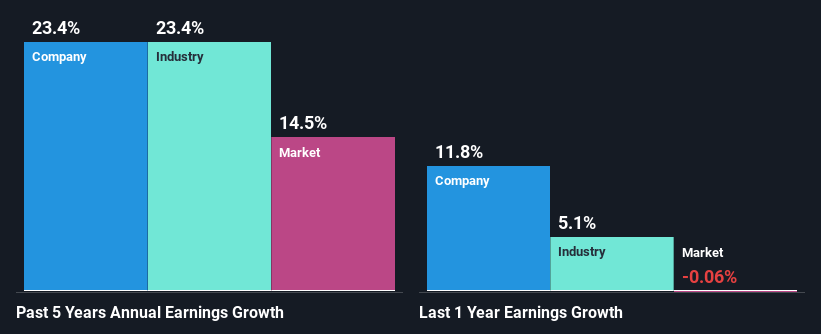Watsco, Inc.'s (NYSE:WSO) Stock's On An Uptrend: Are Strong Financials Guiding The Market?
Watsco (NYSE:WSO) has had a great run on the share market with its stock up by a significant 11% over the last three months. Since the market usually pay for a company’s long-term fundamentals, we decided to study the company’s key performance indicators to see if they could be influencing the market. In this article, we decided to focus on Watsco's ROE.
Return on equity or ROE is a key measure used to assess how efficiently a company's management is utilizing the company's capital. Put another way, it reveals the company's success at turning shareholder investments into profits.
View our latest analysis for Watsco
How Do You Calculate Return On Equity?
ROE can be calculated by using the formula:
Return on Equity = Net Profit (from continuing operations) ÷ Shareholders' Equity
So, based on the above formula, the ROE for Watsco is:
26% = US$694m ÷ US$2.7b (Based on the trailing twelve months to September 2023).
The 'return' is the profit over the last twelve months. So, this means that for every $1 of its shareholder's investments, the company generates a profit of $0.26.
What Has ROE Got To Do With Earnings Growth?
So far, we've learned that ROE is a measure of a company's profitability. Based on how much of its profits the company chooses to reinvest or "retain", we are then able to evaluate a company's future ability to generate profits. Assuming everything else remains unchanged, the higher the ROE and profit retention, the higher the growth rate of a company compared to companies that don't necessarily bear these characteristics.
Watsco's Earnings Growth And 26% ROE
To begin with, Watsco has a pretty high ROE which is interesting. Secondly, even when compared to the industry average of 17% the company's ROE is quite impressive. So, the substantial 23% net income growth seen by Watsco over the past five years isn't overly surprising.
Next, on comparing Watsco's net income growth with the industry, we found that the company's reported growth is similar to the industry average growth rate of 23% over the last few years.
The basis for attaching value to a company is, to a great extent, tied to its earnings growth. It’s important for an investor to know whether the market has priced in the company's expected earnings growth (or decline). Doing so will help them establish if the stock's future looks promising or ominous. If you're wondering about Watsco's's valuation, check out this gauge of its price-to-earnings ratio, as compared to its industry.
Is Watsco Using Its Retained Earnings Effectively?
The high three-year median payout ratio of 63% (implying that it keeps only 37% of profits) for Watsco suggests that the company's growth wasn't really hampered despite it returning most of the earnings to its shareholders.
Additionally, Watsco has paid dividends over a period of at least ten years which means that the company is pretty serious about sharing its profits with shareholders. Based on the latest analysts' estimates, we found that the company's future payout ratio over the next three years is expected to hold steady at 67%. Accordingly, forecasts suggest that Watsco's future ROE will be 27% which is again, similar to the current ROE.
Summary
Overall, we are quite pleased with Watsco's performance. Especially the high ROE, Which has contributed to the impressive growth seen in earnings. Despite the company reinvesting only a small portion of its profits, it still has managed to grow its earnings so that is appreciable. With that said, the latest industry analyst forecasts reveal that the company's earnings growth is expected to slow down. To know more about the latest analysts predictions for the company, check out this visualization of analyst forecasts for the company.
Have feedback on this article? Concerned about the content? Get in touch with us directly. Alternatively, email editorial-team (at) simplywallst.com.
This article by Simply Wall St is general in nature. We provide commentary based on historical data and analyst forecasts only using an unbiased methodology and our articles are not intended to be financial advice. It does not constitute a recommendation to buy or sell any stock, and does not take account of your objectives, or your financial situation. We aim to bring you long-term focused analysis driven by fundamental data. Note that our analysis may not factor in the latest price-sensitive company announcements or qualitative material. Simply Wall St has no position in any stocks mentioned.

